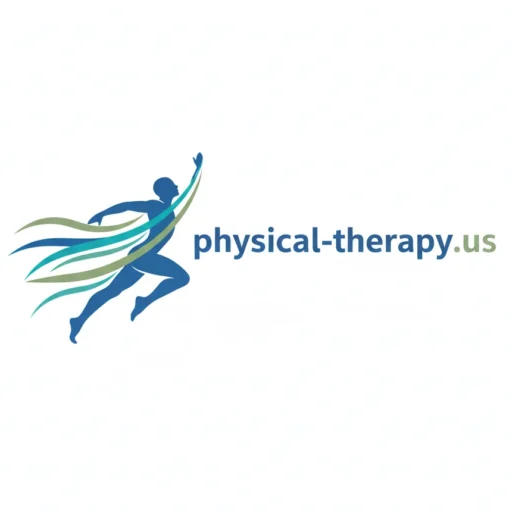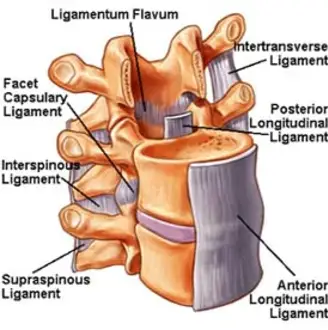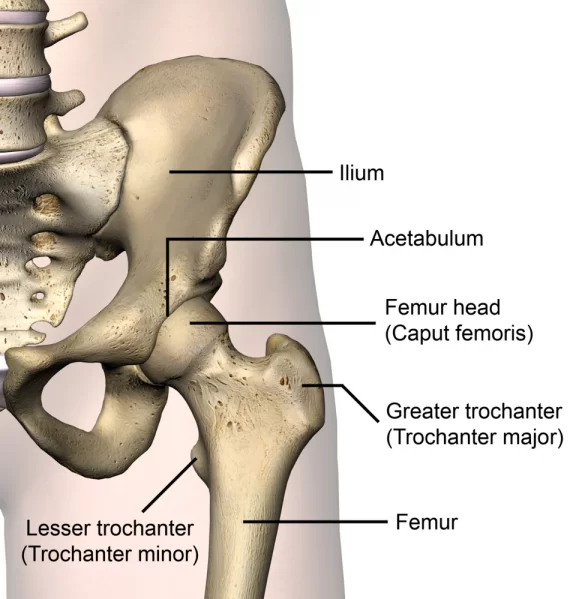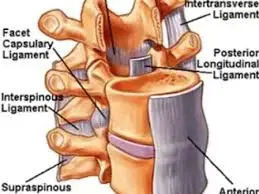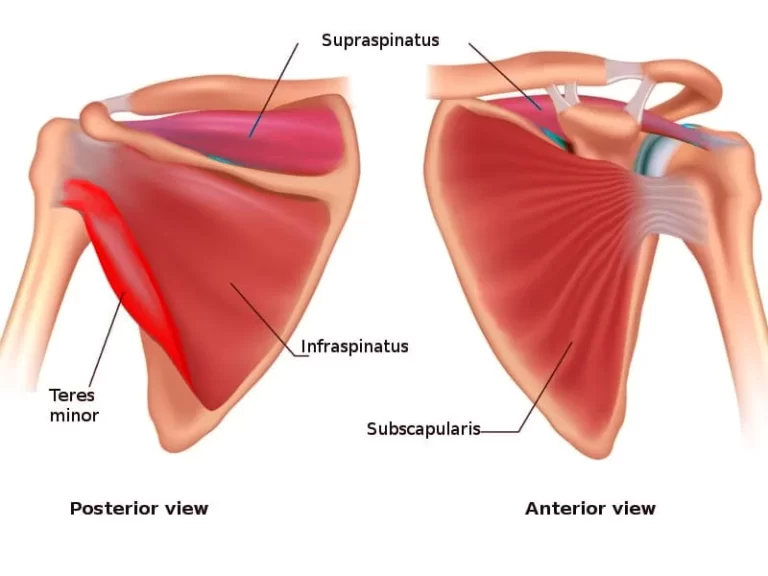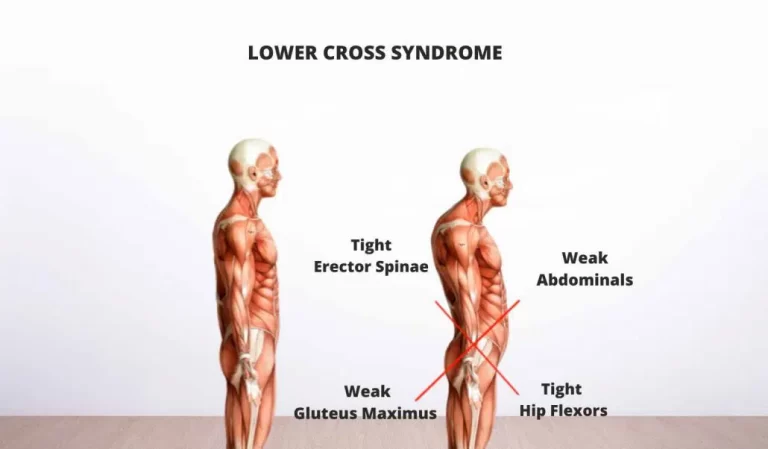Spinal Ligaments
Introduction
Spinal ligaments are strong, fibrous tissues that connect bones and provide stability to the spine. They help maintain proper alignment, support movement, and prevent excessive motion that could lead to injury.
Key spinal ligaments include the anterior longitudinal ligament (ALL), posterior longitudinal ligament (PLL), ligamentum flavum, interspinous ligaments, supraspinous ligament, and facet capsular ligaments. Together, they contribute to the spine’s flexibility and protect the spinal cord and nerves.
Ligaments of the Spine
Important structures that are essential to maintaining and strengthening the spinal column are the spinal ligaments. They help keep the vertebrae in the proper alignment and avoid excessive movement in different planes. The spinal ligaments provide the following purposes:
- The Anterior Longitudinal Ligament (ALL), which runs along the front of the vertebral bodies, aids in preventing the spine from being overextended. It restricts excessive movement in the sagittal plane, which separates the left and right halves of the body. The spinal column is significantly stabilized by the ALL, the strongest ligament in the spine.
- The posterior longitudinal ligament (PLL) keeps the spine from hyperflexing by running along the back of the vertebral bodies inside the spinal canal. It supports the spinal cord and nerve roots and restricts excessive sagittal plane movement.
- Ligamentum Flavum: This structure joins nearby vertebrae as it travels down the back of the spinal canal. Being elastic, it permits some flexibility while assisting in maintaining the proper distance between the vertebrae. Additionally, the ligamentum flavum helps prevent compression of the spinal cord and nerve roots.
- Interspinous Ligaments: These ligaments serve to restrict excessive movement in the spinal column by joining proximal spinous processes. They help to prevent injuries like whiplash and stabilize the spine.
- Supraspinous Ligament: This ligament joins the spinous processes by running along its upper surface. It gives the spinal column stability and aids in preventing excessive spine bending.
Ultimately, the spinal ligaments cooperate to give the spinal column stability and support. They inhibit excessive movement in various planes, keep the vertebrae in proper alignment, and protect against injury to the spinal cord and nerve roots. A successful recovery from spinal ligament injuries requires proper diagnosis and treatment, which can cause pain, stiffness, and decreased movement.
Functions of the Spinal Ligament
The spine’s ligaments keep in a variety of essential functions. Supporting and stabilizing the spinal column is one of their main roles. They help maintain the vertebrae’s natural alignment and reduce excessive movement in different planes, which helps people maintain good posture and prevent accidents.
The strongest ligament in the spine, the anterior longitudinal ligament (ALL), aids in preventing the spine from being overextended. It runs along the front of the vertebral bodies and gives the spinal column an important degree of stability. On the other hand, the spinal canal’s posterior longitudinal ligament (PLL), which runs along the lower part of the vertebral bodies, helps keep the spine from hyperflexing. It helps to avoid injuries like herniated discs and supports the spinal cord and nerve roots.
The interspinous ligaments serve to restrict excessive movement in the spinal column by joining surrounding spinous processes. They help to prevent injuries like whiplash and stabilize the spine. The spinous processes are joined by the supraspinous ligament, which runs along its upper surface. It helps avoid excessive flexion of the spine and stabilizes the spinal column.
Reduced mobility, discomfort, and stiffness can be symptoms of spinal ligament injuries. For a full recovery, the right diagnosis and therapy are essential. The severity of the injury will determine whether the patient receives medicine, physical therapy, rest, or surgery.
Injuries of the Spinal Ligament
Each of the spine’s many ligaments has a specific purpose and a risk of injury. The following are a few typical spinal ligament injuries:
- Anterior Longitudinal Ligament (ALL): Although very uncommon, ALL injuries can be rather serious. The two most frequent forms of ALL injuries are compression fractures and hyperextension injuries.
- Posterior Longitudinal Ligament (PLL): Trauma or degenerative diseases such as spinal stenosis may result in PLL injuries. In the arms or legs, symptoms could include numbness, weakness, and discomfort.
- Ligamentum Flavum: Trauma or degenerative diseases like spinal stenosis can cause injury to this ligament. Pain, weakness, and numbness in the arms or legs are possible symptoms.
- Interspinous Ligament: Trauma or degenerative diseases like spinal stenosis can cause injury to this ligament. Pain, weakness, and numbness in the arms or legs are possible symptoms.
- Supraspinous Ligament: Trauma or degenerative diseases like spinal stenosis can cause injury to this ligament. Pain, weakness, and numbness in the arms or legs are possible symptoms.
- Ligamentum Nuchae: Trauma or degenerative diseases such as cervical spondylosis can cause injury to this ligament. Neck pain, stiffness, and restricted range of motion are possible symptoms.
Any of these injuries to the spinal ligaments may be painful and require medical attention. For a thorough recovery and to avoid long-term issues like chronic pain or spinal instability, proper diagnosis and treatment are crucial.
Examination test for Spinal Ligament injuries
Several tests are highly useful for assessing the condition of the spinal ligaments, including
- Spurling’s Test
- The Transverse Ligament Test
- Rib Springing Test
- Lumbar Ligament Stress Test
- Sacral Spring Test
Spurling’s Test
Spurling’s Test is a unique examination that is used to determine the cervical spine’s stability and pinpoint any weak or unstable spots. It’s usually done when a patient comes in with symptoms like arm or neck pain, or tingling and numbness in the upper extremities.
The patient is instructed to sit up straight and lean their head to one side during the test. The physician then rotates the patient’s head to the other side while applying downward pressure to the top of the head. If there is a spinal ligament injury or nerve compression underlying the cervical spine, this procedure can worsen the symptoms.
If the test is positive, meaning it reproduces the patient’s symptoms, additional imaging studies or diagnostic tests might be asked to confirm the diagnosis and develop a suitable therapy plan. Physical therapy, pain management, rest, and, in severe cases, surgery can all be used to treat spinal ligament injuries.
The Transverse Ligament Test
The transverse ligament, which supports the atlas (the first cervical vertebra) and is situated at the base of the skull, is evaluated for stability using a unique test called the Transverse Ligament Test. A medical professional typically performs this examination, which involves gently pulling the patient’s head forward while applying pressure to the back of the head.
The patient is usually instructed to lie on their back with their head in a neutral position to complete the Transverse Ligament Test. After that, the doctor puts one hand on the patient’s forehead and the other on their chin. They push the patient’s head forward while also gently pressing on the back of it.
The medical practitioner will be evaluated for any atlas movement or instability during this test. Excessive mobility or instability could be a sign of transverse ligament injury. Symptoms like headaches, neck pain, and trouble moving the neck might arise from this.
It is important to remember that the Transverse Ligament Test should only be carried out by a qualified medical practitioner because it applies pressure to the neck and can be harmful if done improperly. It is crucial to get medical help and have a thorough physical examination if you are suffering from neck pain or other symptoms to identify the underlying cause of your symptoms.
Rib Springing Test
This test can be useful in diagnosing disorders like rib subluxations or thoracic spine sprains and is used to find any regions of weakness or instability in the thoracic spine.
The patient is instructed to lie on their stomach with their arms by their sides throughout the test. Following that, the physician gently presses the patient’s ribs in and out while monitoring for any unusual movement or discomfort.
If the test is positive, meaning it reproduces the patient’s symptoms, more imaging studies or diagnostic tests may be asked to confirm the diagnosis and develop a suitable treatment. Treatment options for thoracic spine ligament injuries include rest, physical therapy, pain management, and, in the worst cases, surgery.
Lumbar Ligament Stress Test
This examination can assist diagnose issues like lumbar sprains or facet joint dysfunction by locating any weak or unstable areas in the lumbar spine.
The patient is instructed to lie on their stomach with their legs straight throughout the procedure. To check for any unusual movement or pain, the doctor then applies pressure to the patient’s lower back, gently pressing it forward.
Additional imaging investigations or diagnostic tests could be asked if the test is positive, which means it grows the patient’s symptoms, to confirm the diagnosis and create a suitable treatment. Thoracic spine ligament injuries can be treated with rest, physical therapy, pain control, or, in the worst situations, surgery.
Sacral Spring Test
This test can assist diagnose issues like sacral ligament sprains or dysfunction of the sacroiliac joint by locating any weak or unstable areas in the sacrum.
The patient is instructed to lie on their back with their legs straight throughout the test. After that, the patient’s sacrum is softly pushed downward by the doctor, who also checks for any pain or unusual movement.
Additional imaging investigations or diagnostic tests could be asked if the test is positive, which means it grows the patient’s symptoms, to confirm the diagnosis and create a suitable treatment. Sacral ligament injuries can be treated with rest, physical therapy, pain control, or, in the worst situations, surgery. A qualified medical practitioner should be the only one who performs this test; at-home attempts should be avoided.
Treatment of the Spinal Ligament
How the spinal ligament is treated depends on the severity of the lesion and its underlying cause.
Spinal ligament injuries can be treated conservatively with physical therapy, chiropractic adjustments, non-steroidal anti-inflammatory drug (NSAID) pain management, rest, ice, compression, and elevation (RICE). Exercises to increase the affected area’s strength, flexibility, and range of motion may be part of physical therapy. To straighten the spine and ease pressure on the ligaments, chiropractic care may involve spinal manipulation.
Surgery may be required in more severe cases to replace or repair injured ligaments. Artificial ligament replacement and spinal fusion, which involves fusing two or more vertebrae to support the spine, are two possible surgical procedures.
The severity of the injury and the course of therapy affect how long it takes to recover from spinal ligament injuries. Conservative treatment for minor injuries can heal them in a few weeks, while rehabilitation for more serious injuries may take several months.
If you have any of the signs of a spinal ligament injury, including weakness, stiffness, or back discomfort, you should see a doctor. The early detection and treatment of these conditions can prevent injury and improve results.
Physiotherapy treatment for Spinal Ligament
The goals of physiotherapy for spinal ligament injuries are to lessen pain and inflammation, enhance the range of motion, strength, and flexibility in the injured area, and stop further injury. The severity of the injury and the particular requirements of each patient may influence the process of treatment.
Assessment: By analyzing the patient’s strength, flexibility, range of motion, and pain threshold, the physiotherapist will determine how well the patient is doing. To determine the extent of the injury, they may also use imaging procedures like MRI scans or X-rays.
Pain management: The physiotherapist may use some methods, including ultrasound, electrical stimulation, and ice or heat therapy. To lessen pain and inflammation, they might also suggest non-steroidal anti-inflammatory medications or NSAIDs.
Manual therapy: This method uses manual techniques like massage, mobilization, or manipulation to improve joint mobility and reduce pain. Manual therapy can be used to move the spine and relieve ligament tension.
Exercise therapy: To increase the range of motion, strength, and flexibility in the affected area, the physiotherapist may recommend particular exercises. These workouts could consist of functional movements, strengthening exercises, and stretches.
Education: To reduce the risk of further injury, the physiotherapist may provide instruction on body mechanics, ergonomics, and good posture. Additionally, they might instruct patients on safe and proper exercise techniques.
Exercise regimen at home: To help the patient continue their recovery at home, the physiotherapist might recommend an exercise regimen. To increase mobility and stop additional injuries, this program might incorporate stretches, strengthening activities, and other exercises.
The overall goals of physiotherapy for spinal ligament injuries are to lessen discomfort, enhance function and mobility, and stop further injury. To get the best results, it’s critical to adhere to the physiotherapist’s suggested protocol of treatment and show up for all of your appointments.
Risk factors for the Spinal Ligament
There are several risk factors for spinal ligament injuries, including:
- Trauma: Spinal ligament injuries can result from trauma to the spine, including falls, auto accidents, and sports injuries.
- Repetitive strain: Activities or motions that put stress on the spine, like heavy lifting or bad posture, can raise the risk of spinal ligament injuries.
- Aging: Our ligaments lose some of their elasticity and become more vulnerable to injury as we age. This may make spinal ligament injuries more likely.
- Degenerative conditions: Such conditions as degenerative disc disease or osteoarthritis can weaken ligaments and raise the risk of injury.
- Obesity: Being overweight or obese increases the risk of spinal ligament injuries by putting additional strain on the spine.
- Poor nutrition: A diet deficient in vital nutrients, like calcium and vitamin D, can weaken ligaments and bones, making injuries more likely.
- Smoking: Smoking raises the risk of spinal ligament injuries, slows healing, and decreases blood flow to the spine.
- Genetics: Certain people may be more susceptible to spinal ligament injuries or related conditions due to a genetic predisposition.
To avoid spinal ligament injury and preserve spinal health, it is critical to recognize and treat these risk factors. Maintaining an active lifestyle, avoiding smoking, keeping a healthy weight, and practicing good posture are some ways to reduce the risk of spinal ligament injuries.
How to prevent Spinal Ligament Injury?
The different risk factors that lead to the development of spinal ligament injuries must be discussed to prevent them. The following methods can help avoid spinal ligament injuries:
Practice proper posture: Keeping your posture straight when standing, sitting, and walking can help prevent ligament injuries and lessen the strain on your spine.
Exercise frequently: Frequent exercise can lower the risk of injury by strengthening the muscles that support the spine.
Keep your weight in check: Obesity and excess weight can put additional strain on the spine, raising the risk of injury. By maintaining a healthy weight, this risk can be reduced.
Eat a balanced diet: Eating a diet rich in calcium, vitamin D, and other essential nutrients can help maintain strong and healthy bones and ligaments.
Prevent repetitive strain: The risk of spinal ligament injuries can be raised by repetitive motions or activities that put stress on the spine, such as heavy lifting or bad posture. One way to lower the risk is to avoid these activities or take breaks to stretch and move around.
Quit smoking: Smoking reduces blood flow to the spine, slows healing, and raises the risk of spinal ligament injuries. Giving up smoking can reduce this risk.
See a doctor on a regular basis: Early intervention can be made possible by identifying any underlying conditions that may raise the risk of spinal ligament injuries.
Through the improvement of these risk factors and the use of determines to maintain spinal health, people can reduce their risk of spinal ligament injuries and maintain their overall health and well-being.
FAQs
Spinal ligaments: what are they?
Tough, fibrous bands of tissue called spinal ligaments join the vertebrae and aid in supporting the spine.
Why do spinal ligament injuries occur?
Trauma, like a fall or auto accident, or repetitive strain on the spine, like heavy lifting or bad posture, can result in spinal ligament injuries.
What signs of spinal ligament injury are present?
Pain, stiffness, and restricted range of motion in the affected area are possible signs of spinal ligament injuries.
How do injuries to the spinal ligaments get diagnosed?
A physical examination, imaging tests like X-rays or MRI scans, and occasionally diagnostic injections are used to diagnose spinal ligament injuries.
How are injuries to the spinal ligaments treated?
Physical therapy, pain management, rest, and occasionally surgery are all options for treating spinal ligament injuries.
Is it possible to avoid spinal ligament injuries?
Yes, by improving risk factors like bad posture, obesity, and repetitive strain on the spine, as well as by maintaining good spinal health through exercise and a healthy diet, spinal ligament injuries can be avoided.
References
- Patel, D. (2023c, July 29). Spinal ligament – anatomy, structure, function. Samarpan Physiotherapy Clinic. https://samarpanphysioclinic.com/spinal-ligament/
